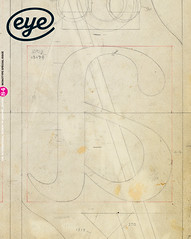Autumn 2012
Machine and man
Art, science and hot metal casting.
Photo essay by Phil Sayer
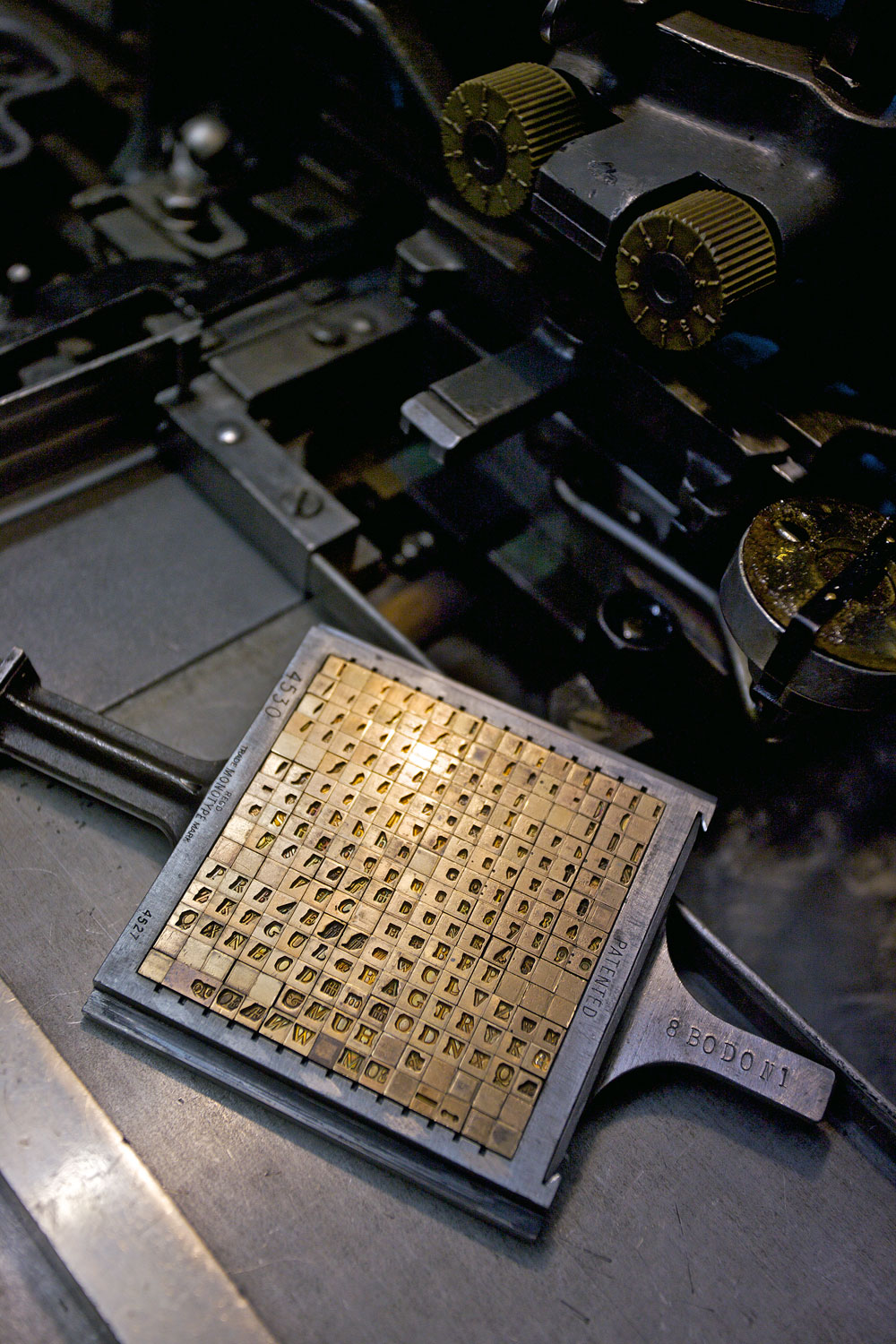
Neil Winter demonstrates the art and science of the Monotype as he prepares galleys of hot metal type at Whittington Press, which continues to print by letterpress using a working keyboard and caster from the 1960s.
Neil Winter operates the Monotype caster, manufactured in the late 1960s, at John Randle’s Whittington Press near Cheltenham in the UK. In the foreground an ingot hangs from the chain that lowers it into the caster’s melting pot.
Top: A matrix case for 8-point Bodoni. Each case has a fifteen by fifteen grid which holds up to 225 brass matrices for the characters to be cast. The case is inserted into the caster face down, and each piece of type is cast from a molten alloy.
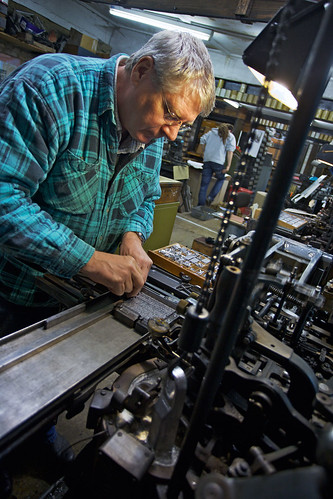
Words are set on a keyboard. Keystrokes and hyphenation and justificationsettings are saved as coded perforations on a paper spool. Text mistakes cannot be corrected until the type is cast.
Winter sets the type, reading from a marked-up manuscript.
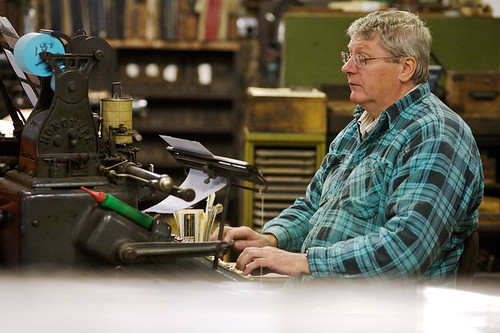
The orange keys at the top of the QWERTY keyboard are used to set the justification at the end of each line. Behind the ‘button banks’ of the keyboard is a set of ‘key-bars’ corresponding to the typeface to be cast. Whittington’s keyboard dates from the mid-1960s.
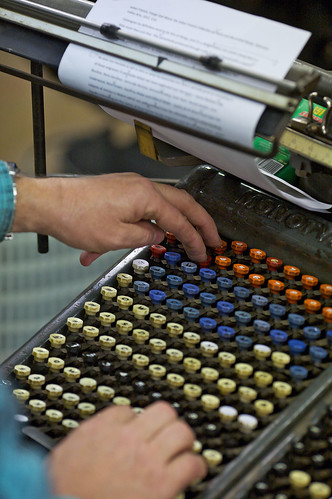
Each keystroke is encoded as perforations in a four-inch wide paper spool.
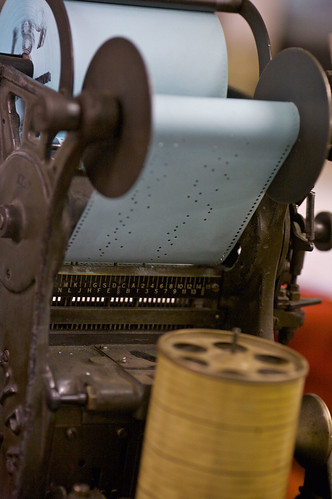
Justification Drum, chosen according to the font’s width, and Justification Scale, set to the measure required. This enables the typesetter to calculate and key the justification settings at the end of each line. The computations are purely mechanical, like a slide rule. Winter says: ‘The technology for those drums is exactly what the Russians used when they went into space.’
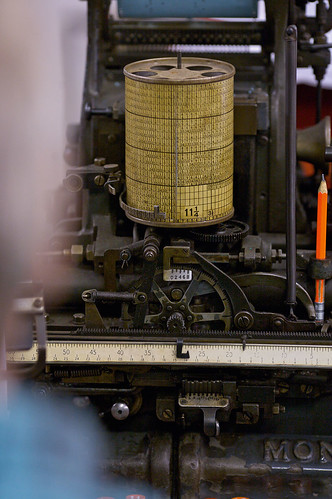
On to the caster. ‘It’s like a car. You drive it and see if it’s running smoothly.’
Winter guides the machine as it casts type. ‘The keyboard is more science than art whereas casting is more art than science – it’s as reliable as the operator.’

A slowly descending ingot, suspended over the melting pot, maintains the supply of hot metal. Neil Winter: ‘You’ve got to listen to the caster as you run it, to keep an eye on it. You’ve got the heat of the pot, the speed of the machine and the flow of the water. You have to balance all of those to make sure that it casts correctly. You have to bring it up just enough so that it solidifies on the outside but it’s still molten in the middle, so it’s quite a delicate balancing act.’
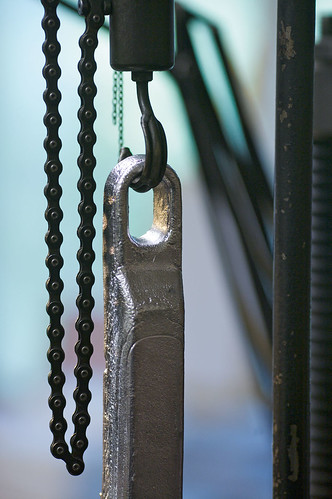
Cooled by water, the single types solidify and emerge in evenly
spaced lines.
The perforations encode a series of coordinates that controls the caster and matrix mechanism, like the perforated paper spool in a player piano.
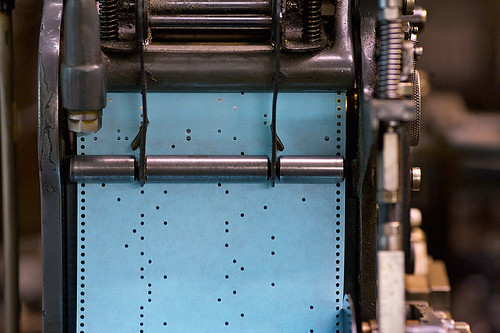
Winter replaces some of the characters with special type characters (such as accented type or particular ligatures) not available in the matrix.

A line of freshly cast single types and spaces emerges to join the galley.
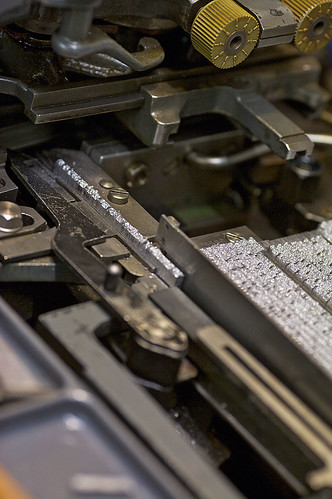
Winter makes final adjustments to the completed galley of freshly cast type at Whittington Press.
‘I’m doing three jobs at once. Ultimately I’m the keyboard operator, caster and compositor,’ says Winter.
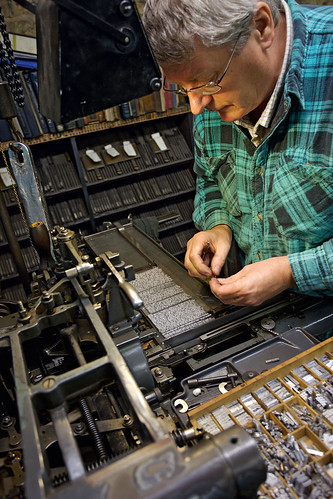
A finished galley, set in 12-point Caslon. After the job is printed, the type is melted down and cast as ingots, ready to be used again.
Winter: ‘Using the Monotype is more hands on, and much more of a craft than using a computer to set type.
‘There is a rigour to hot metal. There are certain things that you can and can’t do, and it’s what you can’t do that defines it.’
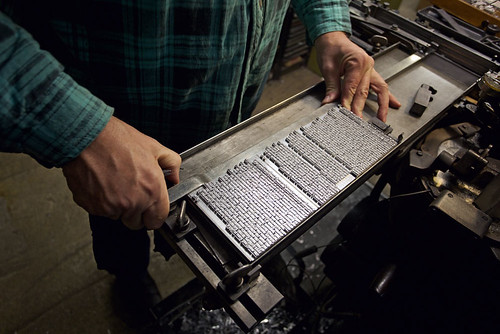
First published in Eye no. 84 vol. 3 2012
Eye is the world’s most beautiful and collectable graphic design journal, published quarterly for professional designers, students and anyone interested in critical, informed writing about graphic design and visual culture. It is available from all good design bookshops and online at the Eye shop, where you can buy subscriptions, back issues and single copies of the latest issue. You can see what Eye 84 looks like at Eye before You Buy on Vimeo.

